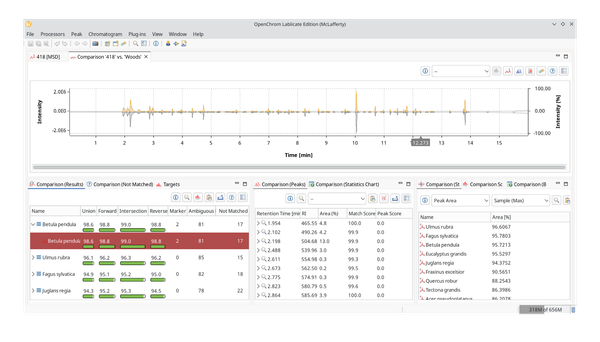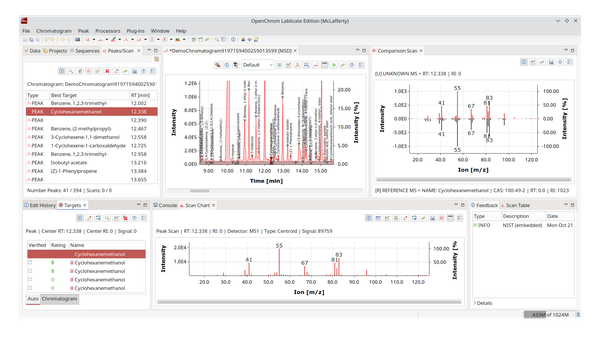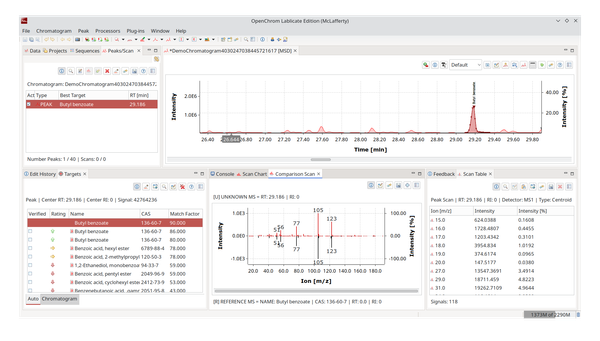NIST Hybrid Search

We talked about identifying peaks using the NIST mass spectral libraries before, which is great if the compound you are searching for is actually in the library, but what if it isn't?
Mass spectral identification is always about patterns of fragments, and you can use that to your advantage. The latest version of OpenChrom contains a new algorithm from NIST called Hybrid Search. It is called hybrid search because it actually combines two searches. The database matching is still performed, but it introduces a new concept called delta mass. It is a substructure search that is based on the fact that if the molecule is different but it has a common base body, then all masses are shifted by the same m/z value.
For direct comparison of the approach, let's do a regular NIST search on our peak.
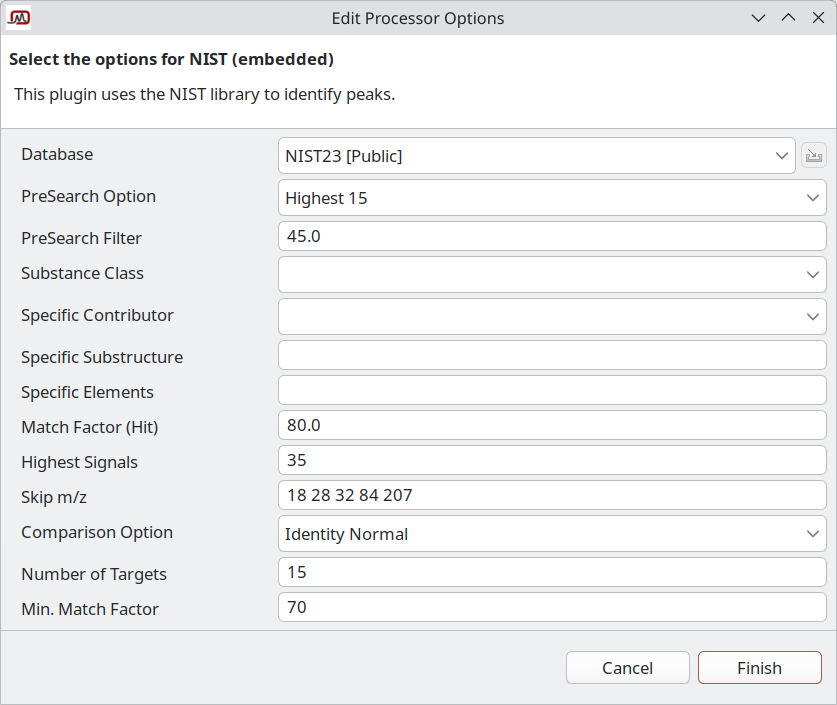
The resulting match score is not that good; the molecular ion is actually missing in the target spectrum. Confidence might not be perfect, but let's assume that this is our target.
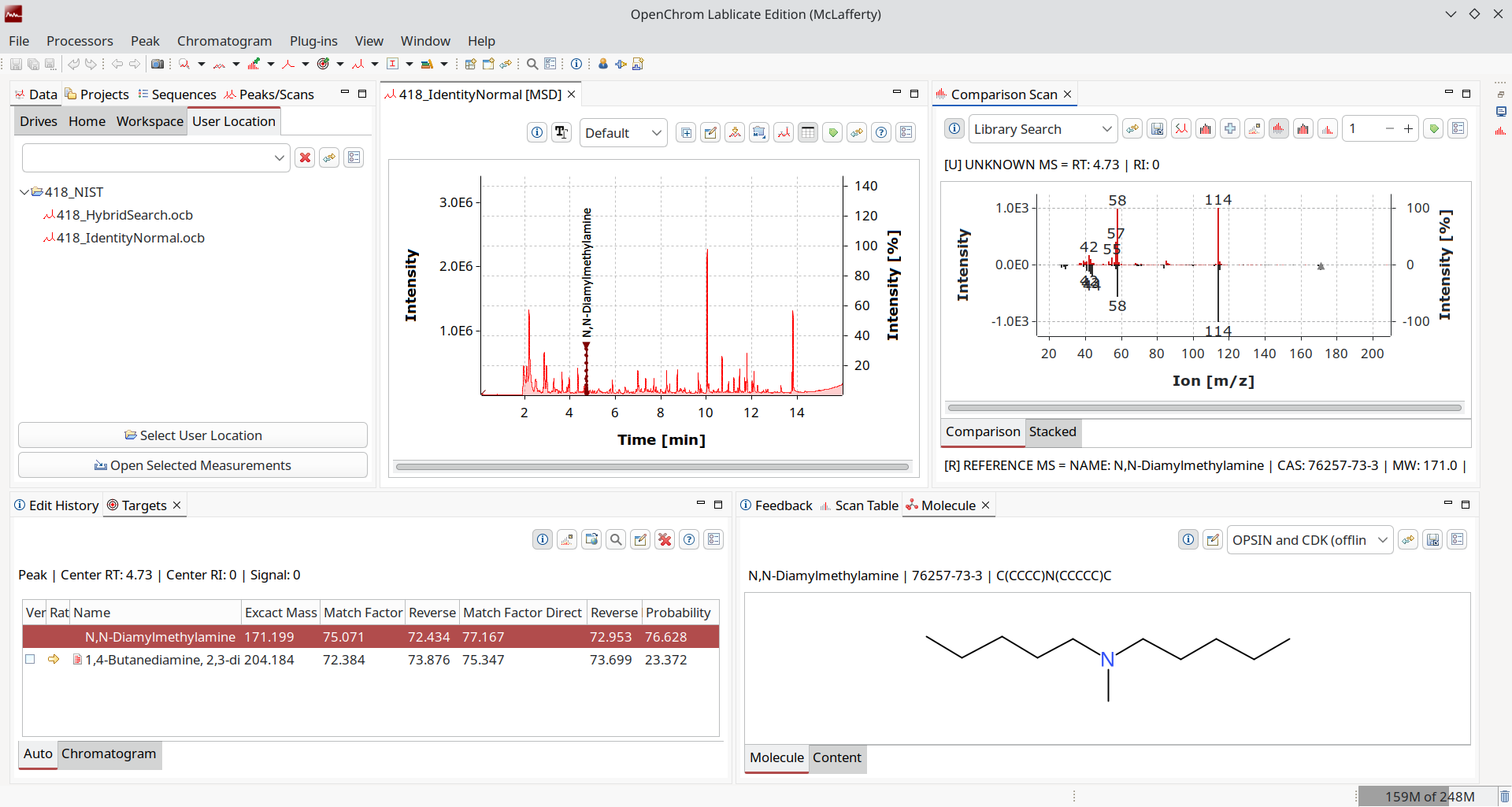
If we do the same peak with Hybrid Search instead:

Something unexpected happens. The best score is a different molecule, and the spectra do not align in comparison at first glance.
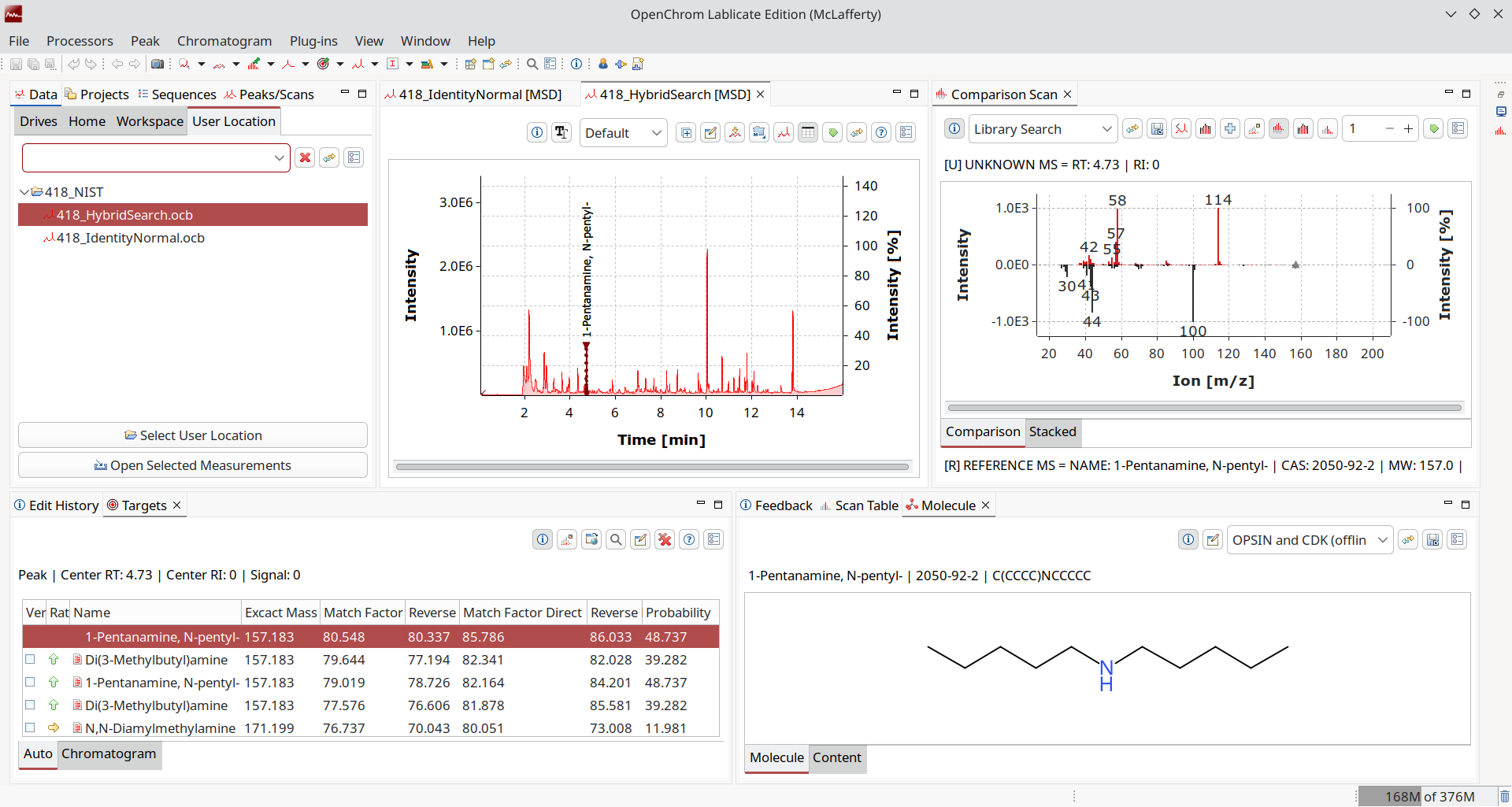
If we compare the two resulting molecules, we notice that a methyl group is replaced by a hydrogen.

We can calculate the difference, which is a loss of ~14 m/z. This is called delta mass. You can also apply common mass spectrometry knowledge, such as that an even delta mass hints at the fact that no nitrogen is present in the removed structure.
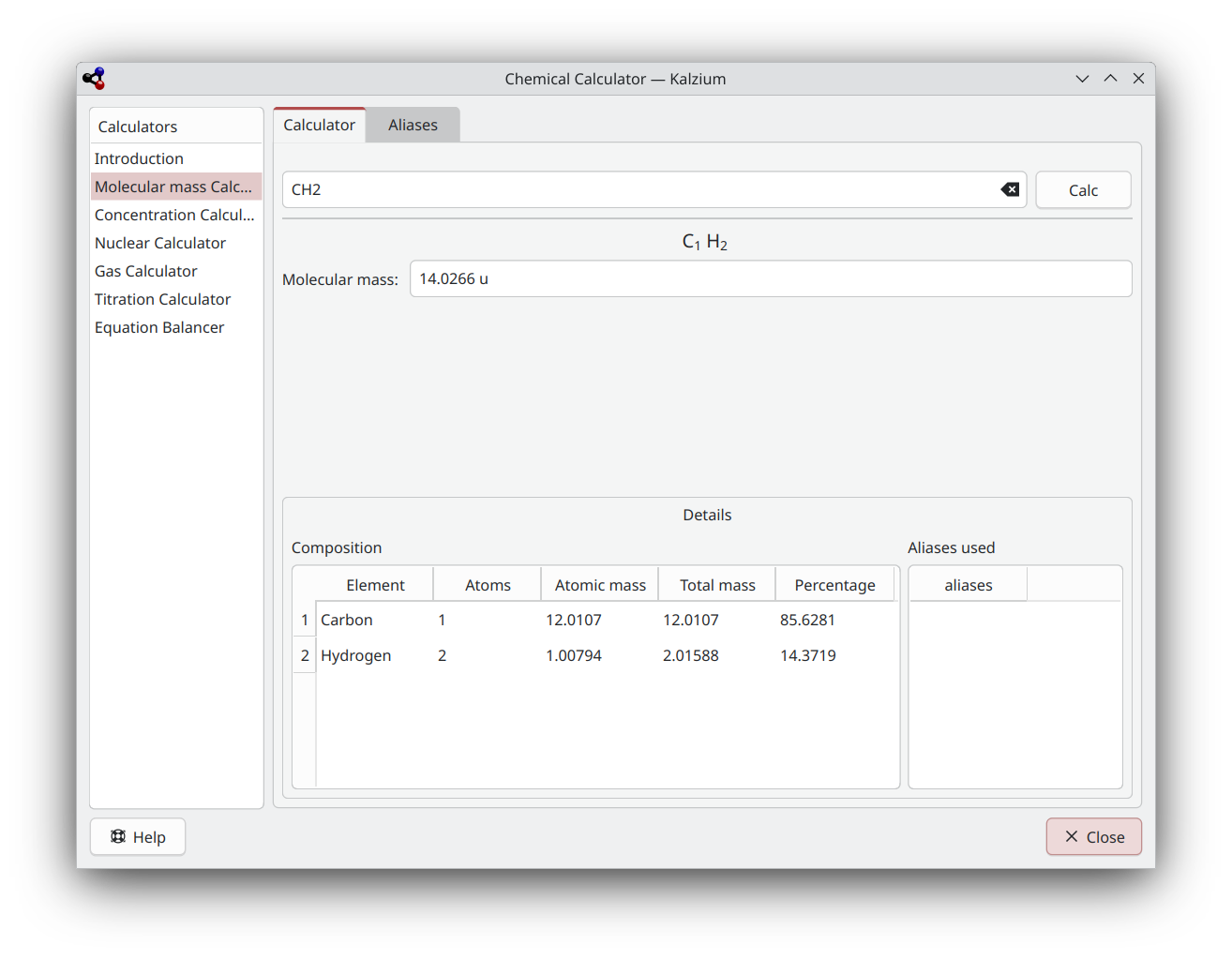
Next we go back to Scan Comparison and enable the hybrid search toolbar.
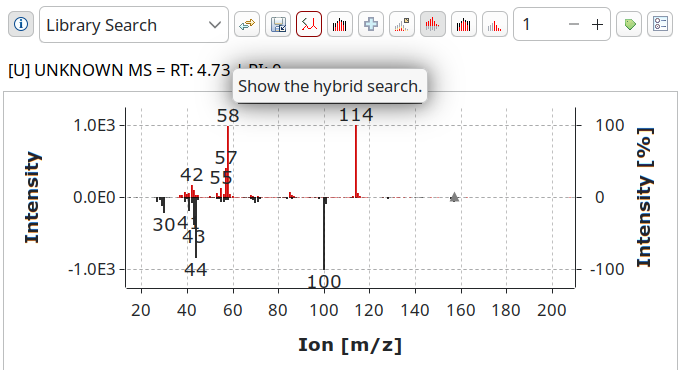
We can shift the chromatogram by entering the molecular weight of our suspected target compound.

This also visualizes how hybrid search actually works. The library is using masses subtracted from the molecular ion for comparison. In this case it confirms that the fragmentation pattern we observed seems to be consistent.
Let's imagine the compound is not in the library. Hybrid search will still come up with a match, albeit not an exact one, but this structure minus an ethyl group, so we can deduce our own structure. This way we get a derived structure or at least a compound class, which can be vital when identifying unknowns. It extends the scope of the existing library with the click of a button.


